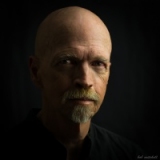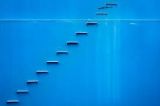- Forum
- General Discussion | Introductions | Off Topic Forum
- Photography General Discussion
- How to clone dust spots?
How to clone dust spots?
Post #376426
I grabbed my digital camera, started shooting, had to stop and reset WB, then went uh-oh, saw the spots and realized I forgot to clean it last time I used it... Kept shooting anyway because I was losing light fast, then grabbed a film camera, but by the time I got it loaded the light was gone.
I can do some cropping and haven't gotten into PS yet to see if I can figure out how to clone out spots so thought I'd ask while I'm on here. Next time maybe I'll remember to clean it when I'm done before I put the camera away!
Sharon
-

- hghlndr6
- Master of the Lens
- Nikon: P510, D600, D7100
- Followers: 1222
- Posts: 1650
-
Points:
28119
Post #376434
Do you use Lightroom 5? The healing brush (in the develop module) has been improved and works differently.
-

- garyrhook
- Oh Wise One
-
- Nikon D850, Nikon D750, Panasonic G7K
- Followers: 912
- Posts: 11103
-
Points:
67681
Post #376444
I find that using the healing brush and just clicking spots can do wonders for small areas. Don't try to heal too much at a time, or it may pull in information (content-aware mode) from all over the image. You don't want that.
And, yes, I've gotten home and discovered all kinds of spots that required attention. It's very annoying. I try to be more diligent about tidying up, but sometimes forget.
-

- Stealthy Ninja
- Moderator
-
- Fuji X stuff and a 1DsIII for some reason
- Followers: 982
- Posts: 16300
-
Points:
6837
Post #376478
garyrhook wrote: +1. The LR brush has lots of overhead, however, since it's non-destructive. Using PS and a copied layer is a lot more convenient in my book.
Um... nothing done in LR is destructive. You can always go back in the history and undo anything you've done. Not sure what you're referring to when you say "since it's non-destructive" though, LR or using copies layers in PS.
Anyway, everyone is wrong.
The fastest and easiest way to remove dust spots in LR is the "Spot removal tool"
Here's a great tutorial:
-

- garyrhook
- Oh Wise One
-
- Nikon D850, Nikon D750, Panasonic G7K
- Followers: 912
- Posts: 11103
-
Points:
67681
Post #376497
Stealthy Ninja wrote:
garyrhook wrote: +1. The LR brush has lots of overhead, however, since it's non-destructive. Using PS and a copied layer is a lot more convenient in my book.
Um... nothing done in LR is destructive. You can always go back in the history and undo anything you've done. Not sure what you're referring to when you say "since it's non-destructive" though, LR or using copies layers in PS.
Um, That's what I said, yes. And I meant the spot removal tool, also, which has a brush mode in LR5. Allow me to expand on my comment.
The problem with it is that each and every action requires recording of the spot/stroke, along with its aftermath. That's a lot of data to manage and it can bog down performance since showing an image requires compositing all of the separate actions into a single raster.
In PS you can use a single raster layer copy for your changes, which requires far less bookkeeping by the program, with the same results. If you need to undo or redo something, you just go get the original material and start over.
The performance of either application is dependent upon your machine; perhaps it also works better on a Mac than Windoze. My experience is that the LR spot healing tool is acceptable up to a point; serious work requires PS because, for me, it's faster. YMMV.
You did save a copy of that layer before you started, right?
-

- Stealthy Ninja
- Moderator
-
- Fuji X stuff and a 1DsIII for some reason
- Followers: 982
- Posts: 16300
-
Points:
6837
Post #376504
garyrhook wrote:
Stealthy Ninja wrote:
garyrhook wrote: +1. The LR brush has lots of overhead, however, since it's non-destructive. Using PS and a copied layer is a lot more convenient in my book.
Um... nothing done in LR is destructive. You can always go back in the history and undo anything you've done. Not sure what you're referring to when you say "since it's non-destructive" though, LR or using copies layers in PS.
Um, That's what I said, yes. And I meant the spot removal tool, also, which has a brush mode in LR5. Allow me to expand on my comment.
The problem with it is that each and every action requires recording of the spot/stroke, along with its aftermath. That's a lot of data to manage and it can bog down performance since showing an image requires compositing all of the separate actions into a single raster.
In PS you can use a single raster layer copy for your changes, which requires far less bookkeeping by the program, with the same results. If you need to undo or redo something, you just go get the original material and start over.
The performance of either application is dependent upon your machine; perhaps it also works better on a Mac than Windoze. My experience is that the LR spot healing tool is acceptable up to a point; serious work requires PS because, for me, it's faster. YMMV.
You did save a copy of that layer before you started, right?
Sure, I'd agree with all that. For just removing dust spots though, I prefer LR and its spot removal tool.
Post #376806
I don't have Lightroom so that takes care of that option. I have Elements, obviously I don't do too much editing. Maybe I'll remember now to clean when I first notice dust spots, I probably won't want to have to do this again!
Sharon
-

- Simon Says
- Photo Guru
-
- D-300
- Followers: 76
- Posts: 3618
-
Points:
256
Post #377140
-

- Stealthy Ninja
- Moderator
-
- Fuji X stuff and a 1DsIII for some reason
- Followers: 982
- Posts: 16300
-
Points:
6837
Post #377162
Simon Says wrote: Welcome to the forum
Who are you talking to?
The person with about 2000 more posts than you who's been here for a long time?
-

- Alan Nunez
- Snapobsessed
-
- Nikon D3 & D2x
- Followers: 88
- Posts: 391
-
Points:
0
Post #377363
- Forum
- General Discussion | Introductions | Off Topic Forum
- Photography General Discussion
- How to clone dust spots?
Latest Reviews
The Olympus Pen E-P7 is an affordable micro four thirds mirrorless camera with 4K video capabilities, a 20.3MP sensor, and 121 focus points, making it a solid entry-level camera for beginners.
The Panasonic G9 II is a 25.2-megapixel micro four thirds camera with numerous features that make it punch out of its weight class, like 779 AF points, 5.8K video, and weather sealing.
The Fujifilm XT5 is a 40MP mirrorless camera capable of 6.2K video at 30p. With those specs, it’s an ideal choice for photographers needing a camera to pull double duty for imaging and video.
The Canon EOS R100 is an entry-level mirrorless camera introduced in 2023. But just because it’s an entry-level camera doesn’t mean it’s a bare-bones camera. Find out why in this review!
Forum Top Posters
-
1Scotty 8 posts
-
2TCav 4 posts
-
3CharleyL 4 posts
-
4Garbo 3 posts
-
5J Photo Man 3 posts
-
6MYoung 2 posts
-
7Shadowfixe... 2 posts
-
8Gammill 2 posts
-
9Little Kate 2 posts
-
10Petroguy 2 posts
Latest Articles
Auto white balance is a camera setting that adjusts the color temperature of your images automatically. It often works well, but you should know a few tips to fix problems it might cause, too.
The Canon EOS 5D Mark III might be more than a decade old, but it still has the chops to be a quality camera for photographers in 2024.
Starting a photography business can be a daunting task. There is a lot to do, and many mistakes can be made. This guide helps you minimize mistakes and maximize your success!
The Canon 6D Mark II might be an older DSLR, but that doesn’t mean it isn’t a good option for 2024. In fact, this budget-friendly camera is a powerhouse for stills and videos.
In this guide to the bokeh effect, you’ll learn what bokeh is and the factors involved in creating it. You’ll also explore some beautiful example images to spark your creativity with bokeh!
Upgrade your kit in 2024 with the best intermediate camera on the market! The question is, what camera fits the bill? We’ve got three top options for you to choose from in this buyer’s guide.
The best photography jobs right now are a mix of tried-and-true gigs like wedding photography and new jobs highlighting AI’s capabilities, travel, and videography.
The Olympus Pen E-P7 is an affordable micro four thirds mirrorless camera with 4K video capabilities, a 20.3MP sensor, and 121 focus points, making it a solid entry-level camera for beginners.
















